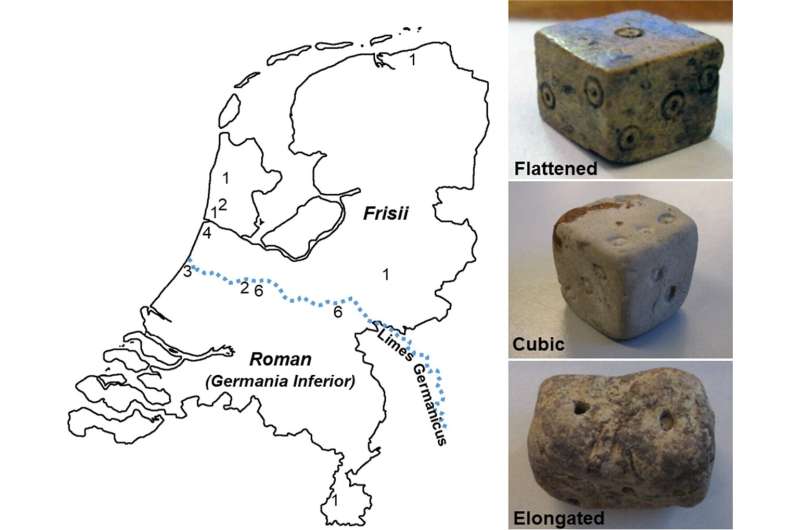
A pair of researchers, one with the University of California, Davis, the other Drew University, believe they may have solved the mystery of why people living during the time of the Roman Empire used lopsided dice in their games. In their paper published in the journal Archaeological and Anthropological Sciences, Jelmer Eerkens and Alex de Voogt, describe their study of dice used during the days of the Roman Empire.
During the time of the Roman Empire, people played a game called tabula (similar to backgammon) which involved throwing dice. The dice were made out of bone, metal or clay and had symbols shown on the faces to represent numbers, as with modern dice. But they differed markedly in shape. The Roman dice were usually elongated or made into other odd shapes that made them asymmetrical.
In this new effort, the researchers studied 28 die from the period and found that 24 of them were asymmetrical. They found a pattern in the irregularity—icons representing one and six were often present on larger opposing surfaces. Prior research has shown that asymmetry in a die can impact the probability of a given side landing face up. Based on their measurements, the researchers calculated that the difference in size would change the odds of rolling a given a number, on average, from one in six to one in 2.4.

Why early Romans used lopsided dice
A pair of researchers, one with the University of California, Davis, the other Drew University, believe they may have solved the mystery of why people living during the time of the Roman Empire used lopsided dice in their games. In their paper published in the journal Archaeological and...

Why are Roman-period dice asymmetrical? An experimental and quantitative approach - Archaeological and Anthropological Sciences
Roman-period six-sided dice are common in archaeological sites across Europe. While some dice approach true cubes, many are visibly non-cubic (i.e., asymmetric/lopsided) and favor certain rolls, especially the numbers 1 and 6. It is unclear if such dice were intentional and distinctive “types”...
Last edited:
